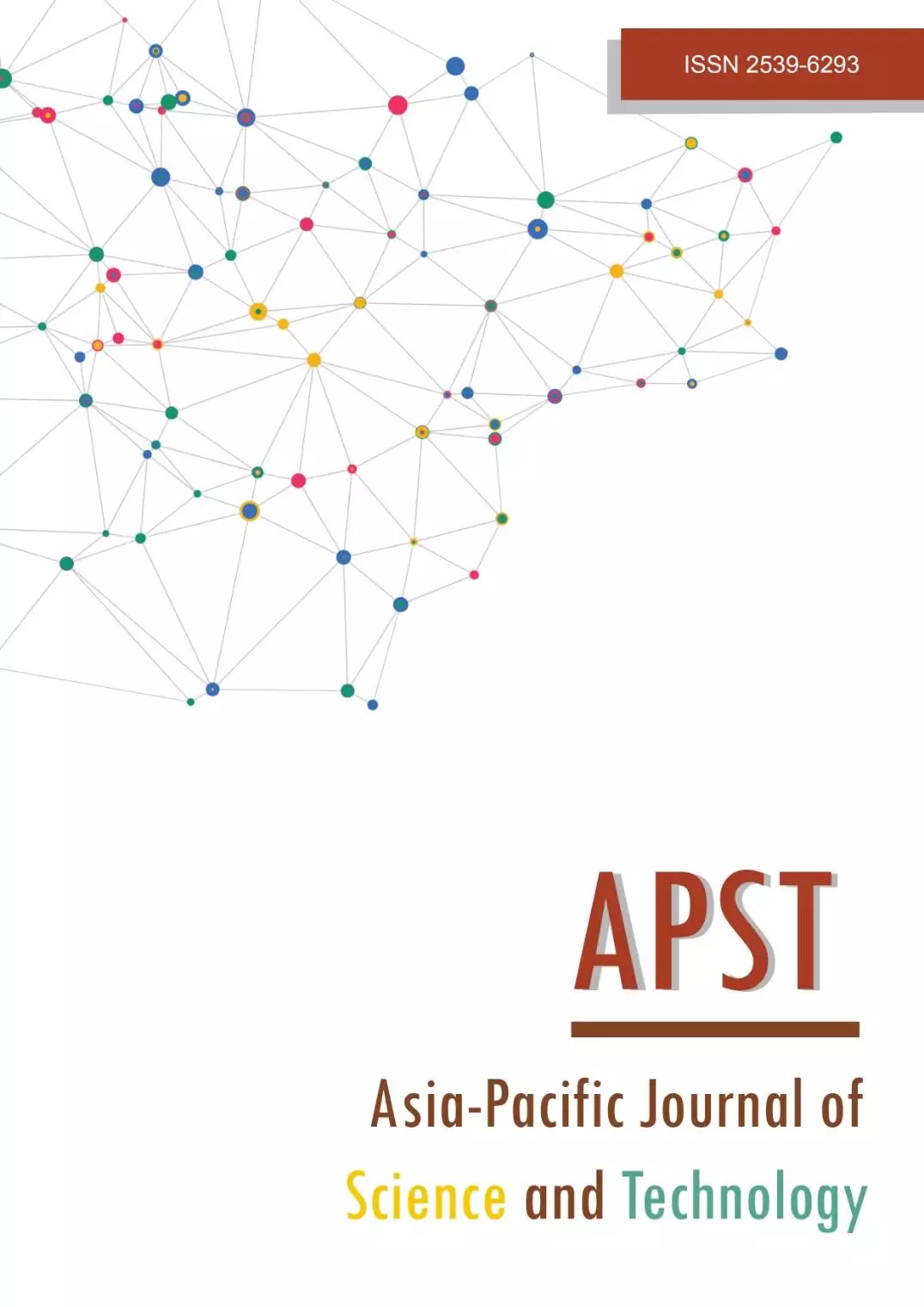Study on kinship among kepok banana cultivars using resistance gene analogue (RGA) based single nucleotide polymorphism (SNP) markers
Main Article Content
Abstract
The primary goal of the research is to implement Resistance Gene Analog (RGA) markers to determine the kinship of three kepok banana cultivars from Bandarlampung: kepok abu (AAB genome), kepok batu (ABB genome), and kepok kuning (BBB genome). The banana RGA genome sequence from GenBank (ID: KF034945 to KF034953) was used to examine the sequencing data for parallels. Phylogenetic trees were constructed with 1000 bootstrap replicates of neighbor-joining using MEGA X. It was determined that the primer SNP2-MNBS-Ref. may identify Single Nucleotide Polymorphism (SNP) sites at the 327th nucleotide base pair, which is the cytosine nucleotide base, in the RGA of the three banana cultivars that have been validated in GenBank. The phylogenetic tree showed that the three banana cultivars have a common ancestor, which is Musa balbisiana cv. Klutuk Wulung. With a genetic distance of 29%, the progenitor created a branch where Kepok Batu and Kepok Kuning are in the same clade as Musa acuminata subsp. burmannica cv. Calcuta4. Kepok Abu is in the same clade as Musa acuminata cv. Rejang and Musa acuminata subsp. Malaccensis, with a genetic distance of 28%. This indicates that Kepok Batu and Kepok Kuning are one cultivar but distinct variations. Consequently, it may be said that each of the three banana cultivars studied has an SNP location in the R gene. Kepok Abu's reduced genetic distance indicates that it may be a good source of R gene material for the Musa improvement program, which aims to produce a cultivar with increased pathogen resistance.
Article Details

This work is licensed under a Creative Commons Attribution-NonCommercial-NoDerivatives 4.0 International License.
References
D’Hont A, Denoeud F, Aury JM, Baurens FC, Carreel F, Garsmeur O, et al .The banana (Musa acuminata) genome and the evolution of monocotyledonous plants. Nature. 2012;488:213-217.
Ortiz R, Swennen R. From crossbreeding to biotechnology-facilitated improvement of banana and plantain. Research review paper. Biotechnol Adv. 2014;32:158-169.
Sardos J, Rouard M, Hueber Y, Cenci A, Hyma KE, van den Houwe I. A genomewide association study on the seedless phenotype in banana (Musa spp.) reveals the potential of a selected panel to detect candidate genes in a vegetatively propagated crop. PLoS ONE. 2016;11(5):e0154448.
Miller RNG, Bertiole DJ, Baurens FC, Santos CMR, Alves PC, Martins NF, et al. Analysis of non-TIR NBS-LRR resistence gene analogs in Musa acuminata Colla: Isolation, RLFP marker development and physical mapping. BMC Plant Biol. 2008;8(1):1-15.
Hinge VR, Shaikh IM, Chavhan RL, Deshmukh AS, Shelake RM, Ghuge SA, et al. Assessment of genetic diversity and volatile content of commercially grown banana (Musa spp.) cultivars. Sci Rep. 2022;12:7979.
Yang C-Y, Sathyapriya H, Wong M-Y. Characterisation of pathogenesis-related genes and resistance gene candidates in banana (Musa acuminata) and their expression during host-pathogen interaction. Pertanika J Trop Agric Sci. 2016;39(1):55-72.
Dwivany FM, Stefani G, Sutanto A, Nugrahapraja H, Wikantika K, Hiariej A, et al. Genetic relationship between Tongka Langit Bananas (Musa troglodytarum L.) from Galunggung and Maluku, Indonesia, Based on ITS2. Hayati J Biosci. 2020;27(3):258-265.
Fluhr R. Sentinels of disease. Plant resistance genes. Plant Physiol. 2001;127:1367-1374.
Sekhwal MK, Li P, Lam I, Wang X, Cloutier S, You FM. Disease resistance gene analogs (RGAs) in plants. Int J Mol Sci. 2015;16:19248-19290.
Wang X, Yu R, Li J. Using genetic engineering techniques to develop banana cultivars with Fusarium wilt resistance and ideal plant architecture. Front Plant Sci. 2021;11:617528.
Probojati RT, Listyorini D, Sulisetijono S, Wahyudi D. Phylogeny and estimated genetic divergence times
of banana cultivars (Musa spp.) from Java Island by maturase K (matK) genes. Bull Natl Res Cent. 2021; 45(1):33.
Baum D. Reading a phylogenetic tree: The meaning of monophyletic groups. Nature Edu. 2008;(1):190.
Liu A-Z, Kress JW, Li D-Z. Phylogenic analyses of the banana family (Musaceae) based on nuclear ribosomal (ITS) and chloroplast (trnL-F) evidence. Taxon. 2010;59(1):20-28.
Christelová P, Valárik M, Hÿibová E, de Langhe E, Doležel J. A multi gene sequence-based phylogeny of the Musaceae (banana) family. BMC Evol Biol. 2011;11:1-13.
Martanti D, Widyastuti U, Poerba YS, Megia R. Identification of gene candidate of nucleotide binding site (NBS) from banana Musa acuminate Colla var. Malaccensis (Ridll.) Nasution and Musa, AAA, Cavendish Sub-group. Pak J Biol Sci. 2015;18(3):99-106.
Noor FN. Phylogenetic analysis and time divergence of genus Musa spp. using S16 protein genes (Rps16) intron chloroplast. Bioinform Biomed Res J. 2019;2(1):1-7.
Meitha K, Nugrahapraja H, Wikantika K. Phylogenetic analysis of 23 accessions of Indonesian banana cultivars based on Internal Transcribed Spacer 2 (ITS2) region. Indo J Biotechnol. 2020;25(1):1‐11.
Wu C-S, Sudianto E, Chiu H-L, Chao C-P, Chaw S-M. Reassessing banana phylogeny and organelle inheritance modes using genome skimming data. Front Plant Sci. 2021;12:713216.
Sutanto A, Hermanto C, Sukma D, Sudarsono S. Development of SNAP marker based on resistance gene analogue genomic sequences in banana (Musa spp.). J Hort. 2013;23(4):300-309. (in Indonesian)
Ernawiati E, Agustrina R, Irawan B, Nurhasanah E, Kanedi M. Germplasm diversity of banana (Musa Spp) in the city of Bandar Lampung, Indonesia by type of genome and number of chromosome. Sch J Agric Vet Sci. 2018;5(4):251-254.
Gupta PK, Roy JK, Prasad M. Single Nucleotide Polymorphisms: A new paradigm for molecular marker technology and DNA polymorphism detection with emphasis on their use in plants. Curr Sci. 2001;80(4):524-535
Akter S, Huq MA, Jung Y-J, Cho Y-G, Kang K-K. Application of single nucleotide polymorphism markers for selection of male sterility in crop plants. Plant Breed Biotech. 2016;4(4):379-386.
Shehzad M, Ditta A, Iqbal MS, Jarwar AH. Role of molecular markers and importance of SNP for the development of cotton programs. J Biol Agric Healthcare. 2017;7(21):61-73.
Kumar S, Stecher G, Li M, Knyaz C, Tamura K. MEGA X: Molecular Evolutionary Genetics Analysis across computing platforms. Mol Biol Evol. 2018;35:1547-1549.
Pei X, Li S, Jiang Y, Zhang Y, Wang Z, Jia S, Isolation, characterization and phylogenetic analysis of the resistance gene analogues (RGAs) in Banana (Musa spp). Plant Sci. 2007;172(6):1166-1174.
Sukartini, S. The grouping of banana accessions using the morphological character of IPGRI. J Hort. 2007; 17(1):26-33.


